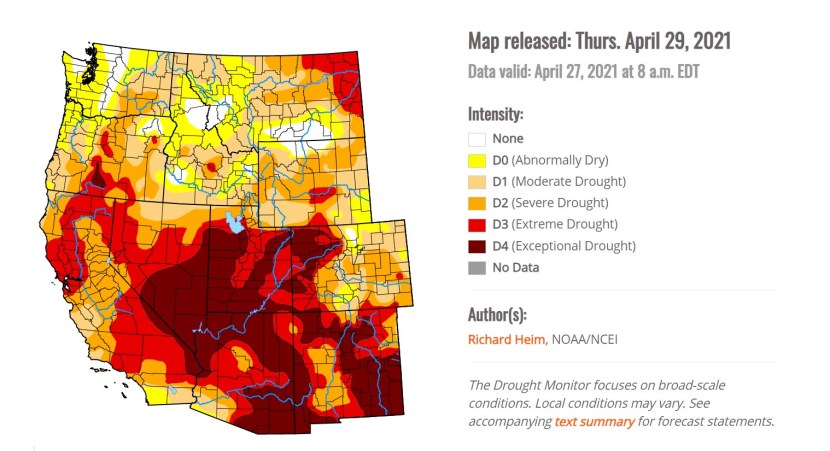CAL FIRE ACTIVATES FOUR ADDITIONAL ENGINES, SIKORSKY JOINS REGIONAL FLEET IN FIRE SEASON BUILDUP
With fuel moisture levels historically low across the North Bay region, Cal Fire has put on standby four additional engines, and has assigned a Sikorsky helicopter capable of delivering 1 thousand gallons per drop, to bolster regional firefighting efforts.
This comes as fire researchers at San Jose State University report fuel moisture at historically low levels. With two years of drought reducing new growth, and existing vegetation extra dry, Northern California is entering the summer with conditions that are usually seen in early July.
This graph shows where fuel moisture levels are compared to average. (Image 1)

This comes as no surprise to residents of the North Bay, where the state has already proclaimed a drought emergency for Sonoma and Mendocino counties. Going forward, this will allow utilities to reduce releases from lakes Sonoma and Mendocino, preserving more water for household and agricultural uses.
As of early May, fire danger was considered moderate to severe across the North Bay. (Image 2)

Most of the region received 50% or less of normal moisture this water year, deepening drought conditions. These charts show drought conditions last year at this time, and this year. (Images 3 and 4)


In early April the state allocated an additional $536 million toward projects that will help to harden communities and reduce fire risk in the state’s most vulnerable regions, including the North Bay.
Meanwhile, the long range outlook for the summer season is for drier than normal conditions to persist, and the drought to intensify. (Images 5 and 6) 

The bigger picture is more hopeful. Climate scientists expect La Nina conditions that have contributed to California dryness to ease in May and June.
So called “ENSO Neutral” conditions (neither El Nino or La Nina) are then expected to continue into the winter season, with a slight tendency toward a return to El Nino conditions as the winter progresses. (Image 7)

This isn’t a surprise. El Nino and La Nina conditions run in multi-year cycles. Blue indicates La Nina, red El Nino. (Image

All of this may be good news for our overall water outlook. ENSO neutral or El Nino years tend to be wetter for California, on average. In fact, the very wet winter of 2016-2017 (150% of average for much of NorCal) was an ENSO neutral to weak El Nino season.
The ultra long range forecasts are picking up on this. The CFS outlook for Oct, Nov and Dec is calling for normal rains, as is the European outlook for Sept, Oct and Nov. (Images 9 and 10)


If it happens we’ll take it, especially after experiencing a late onset to the rainy season and an extended fire season across Northern California the past few years.


Recent Comments